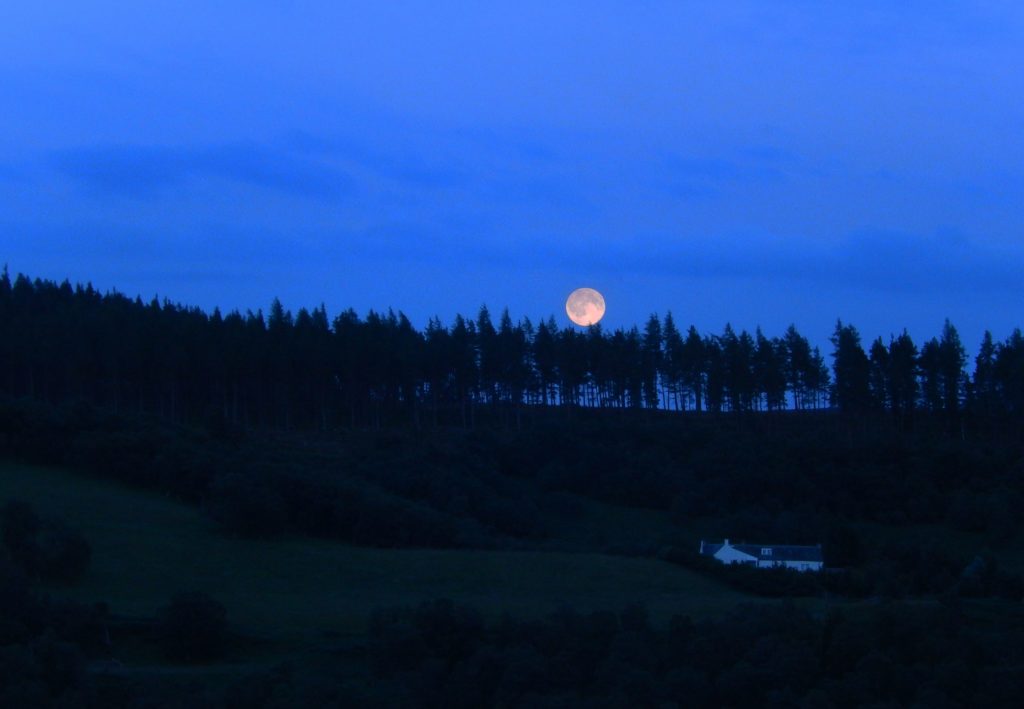
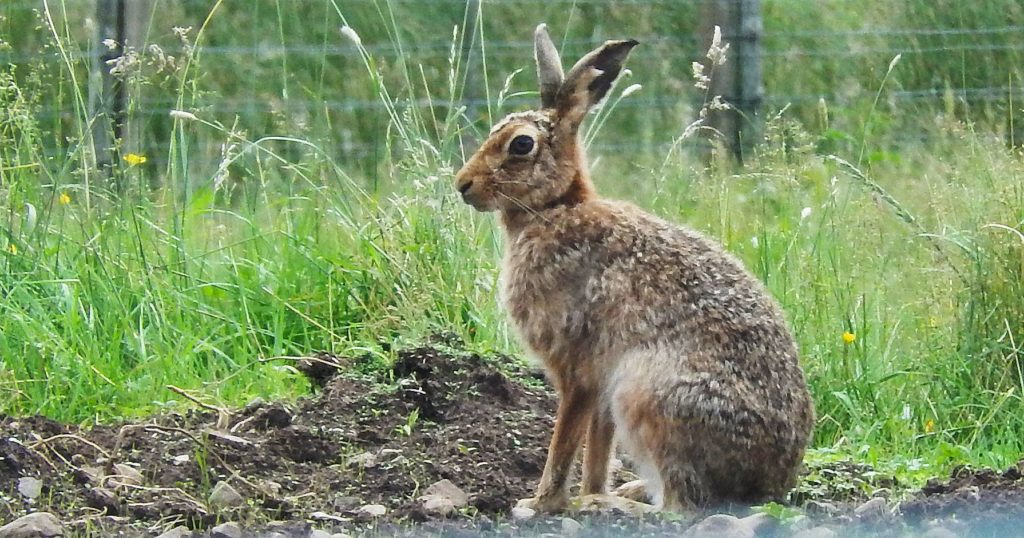
Watchfulness seems to be the, er, watchword for the wildlife of the Upper Spey valley. This hare kept a close eye on me, then lolloped off, not appearing to hurry, but going pretty quick, before squeezing under a gate.
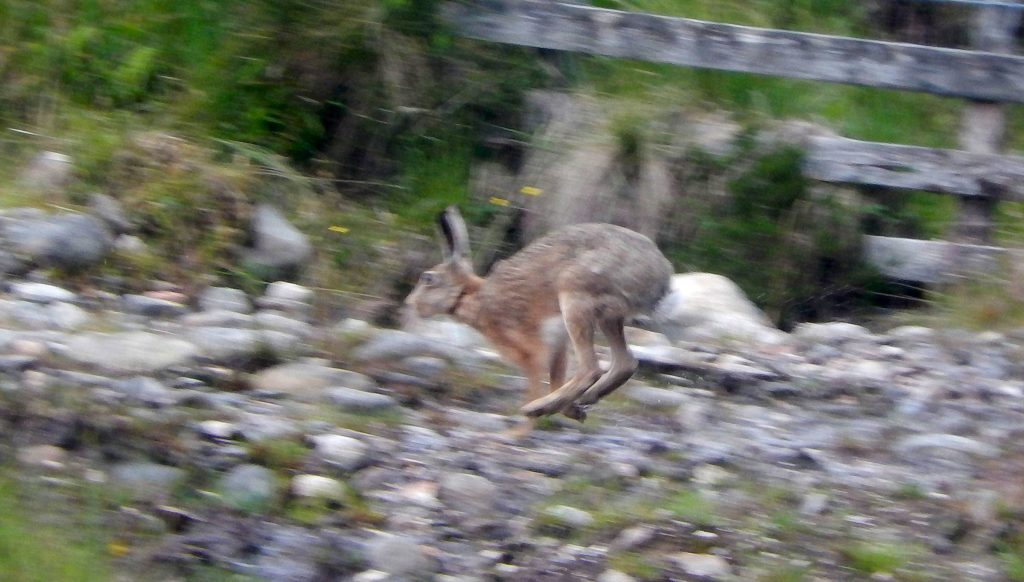
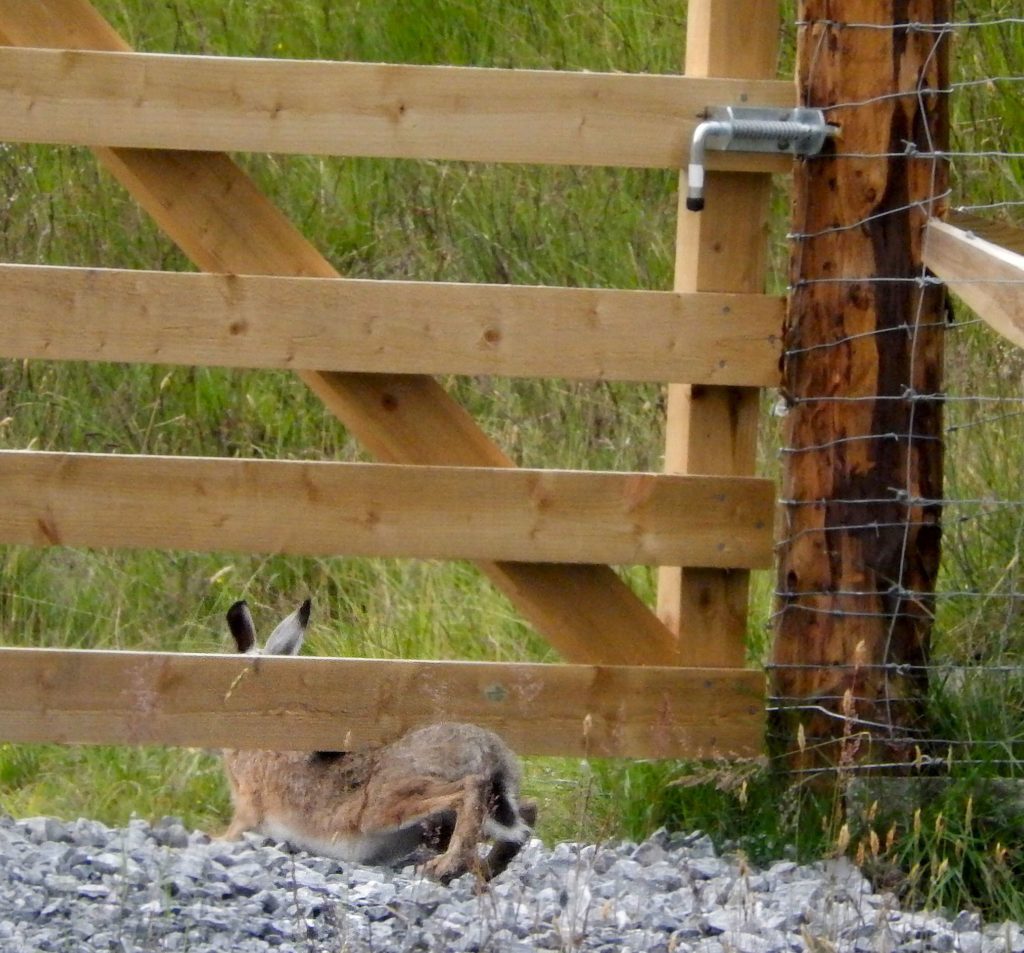
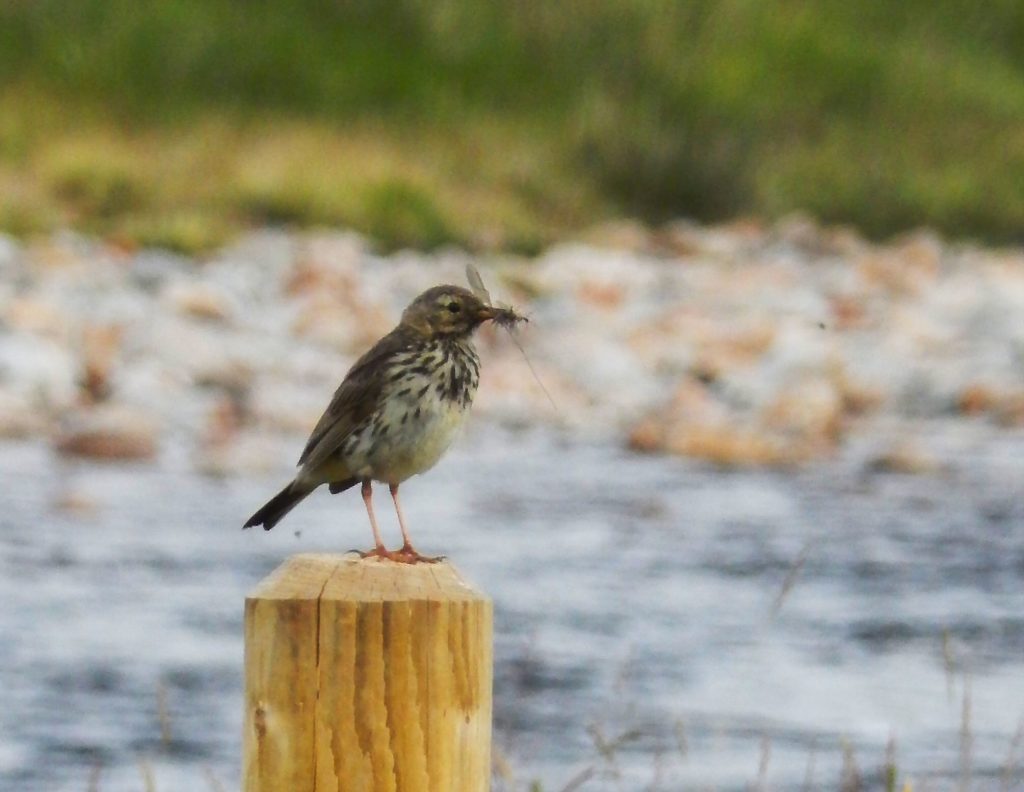
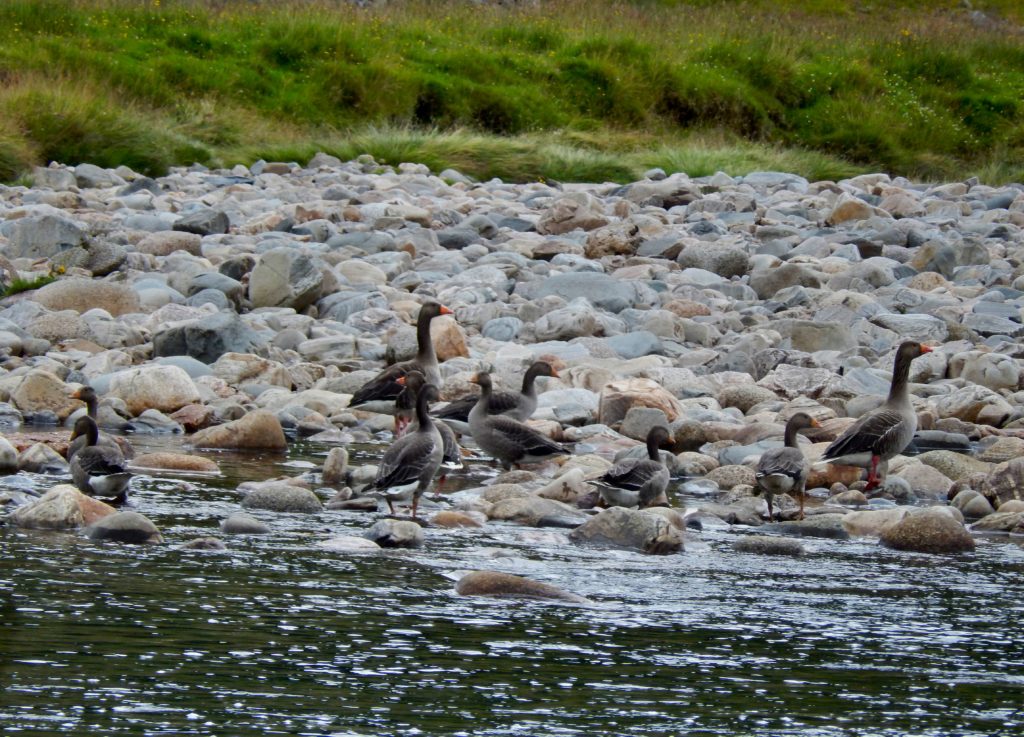


Watchfulness seems to be the, er, watchword for the wildlife of the Upper Spey valley. This hare kept a close eye on me, then lolloped off, not appearing to hurry, but going pretty quick, before squeezing under a gate.




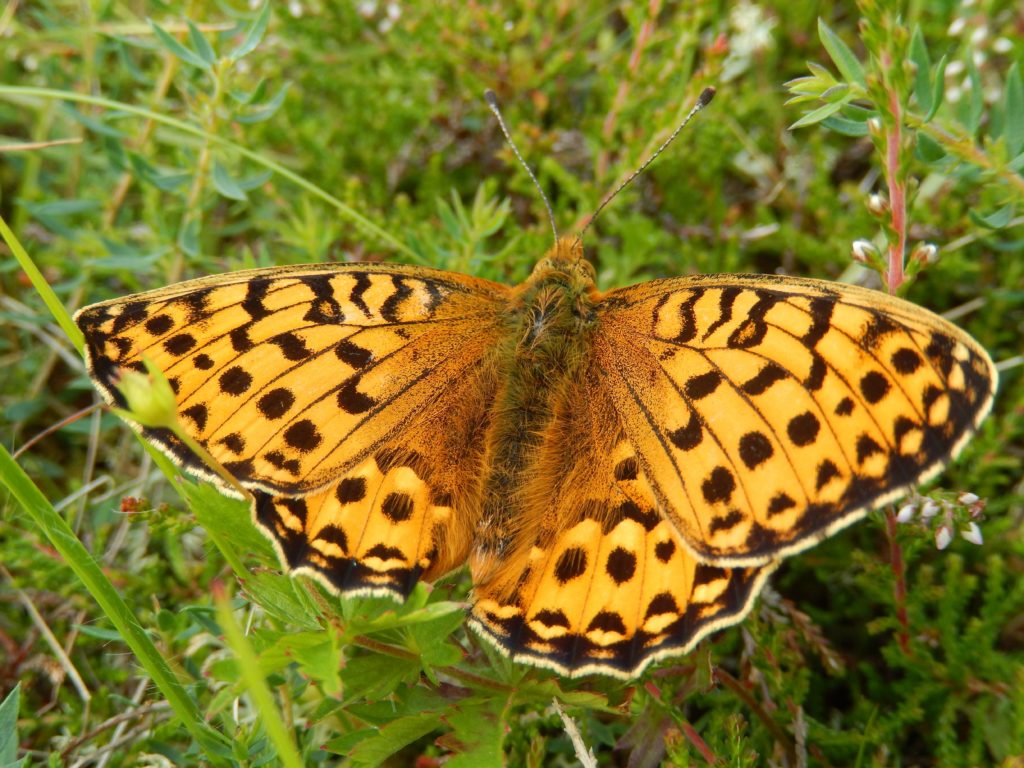
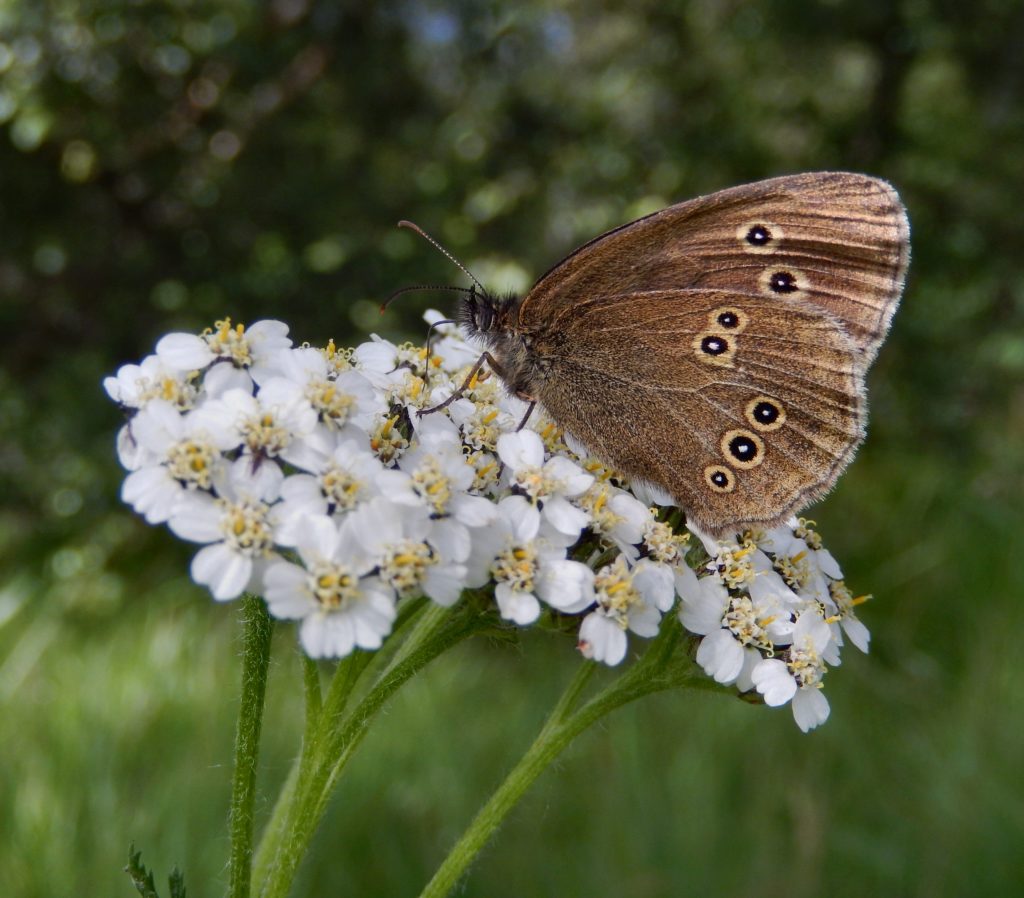
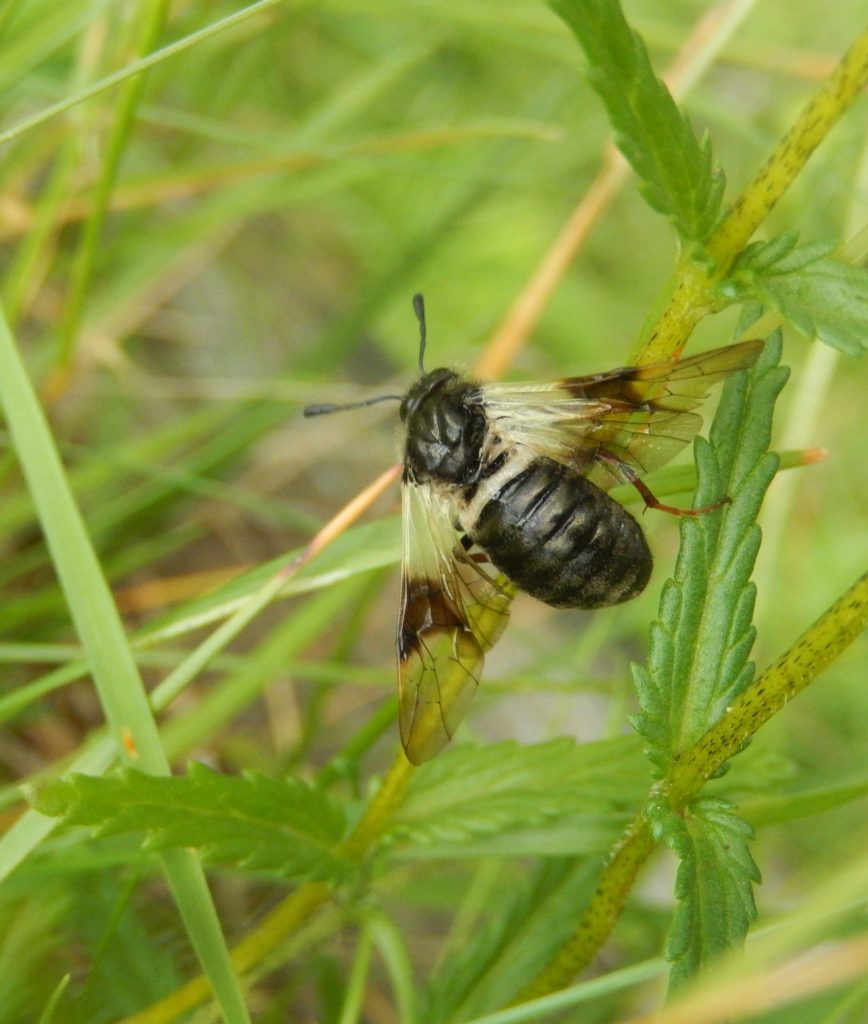
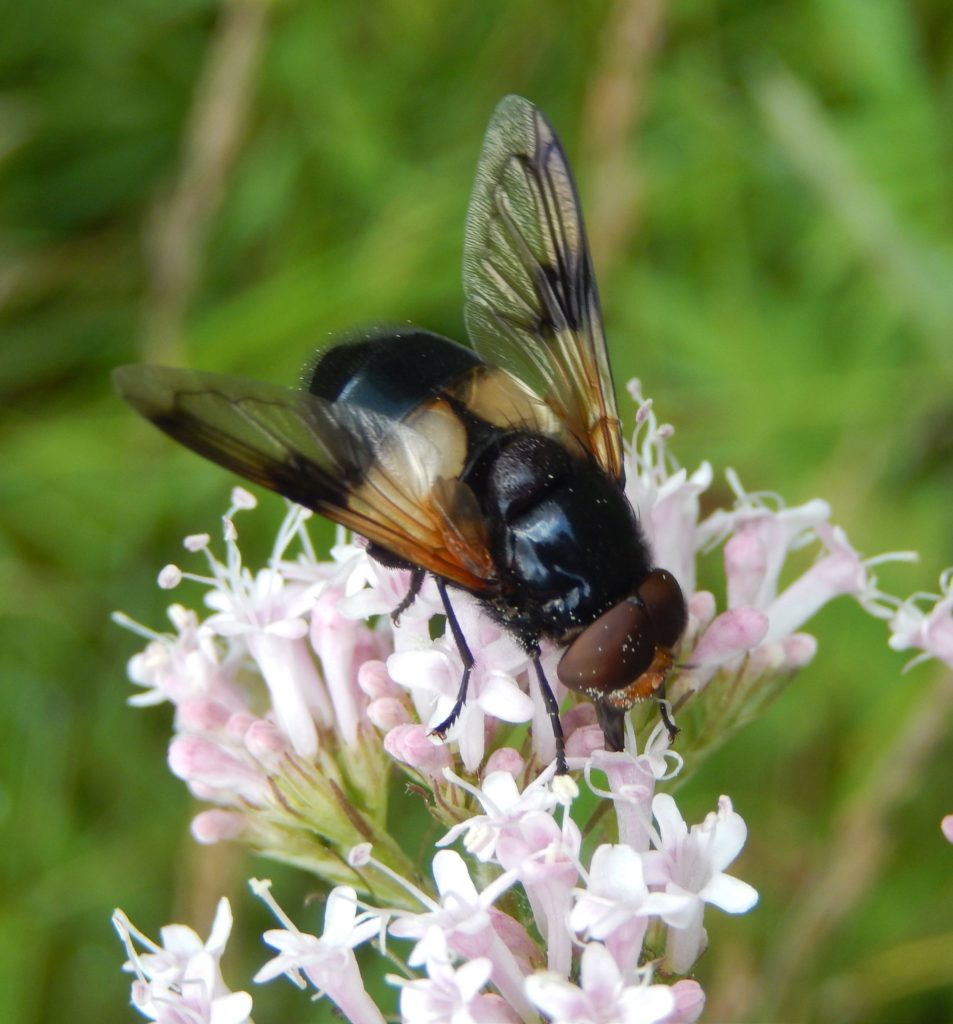
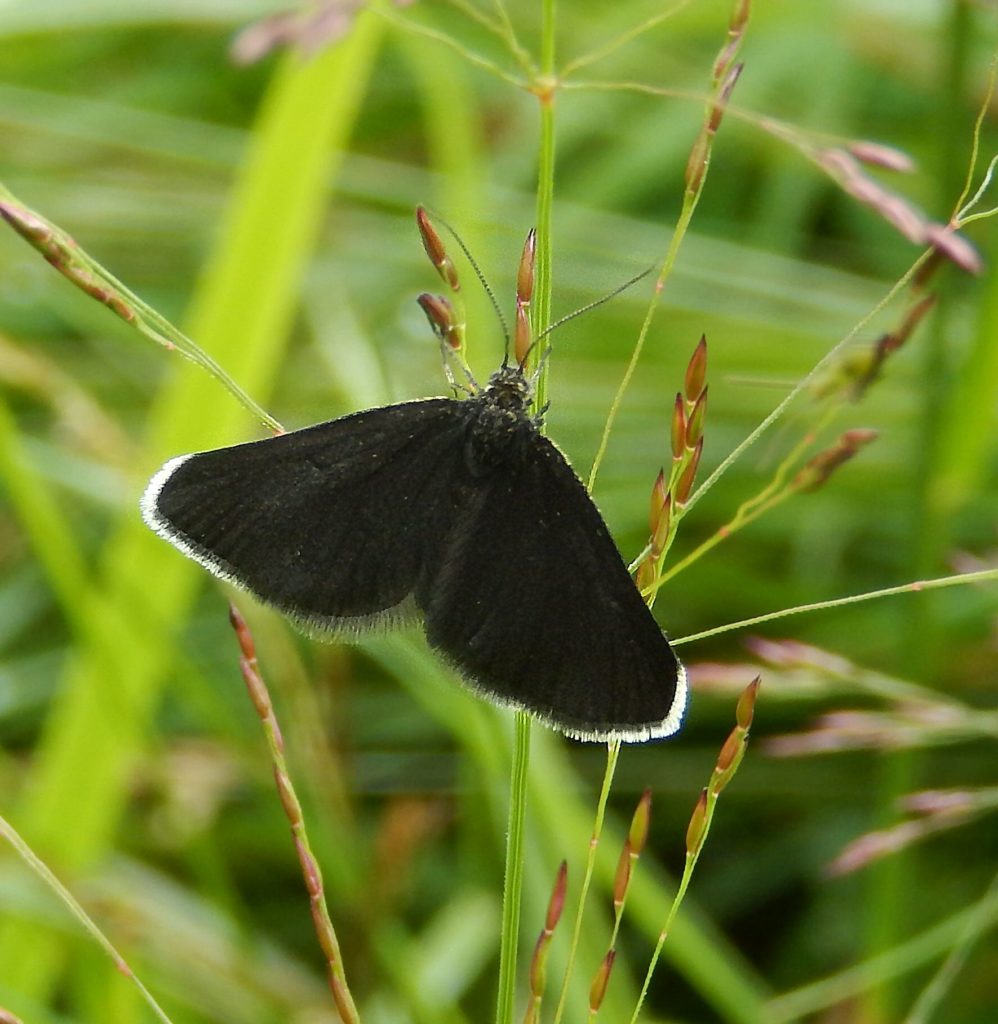
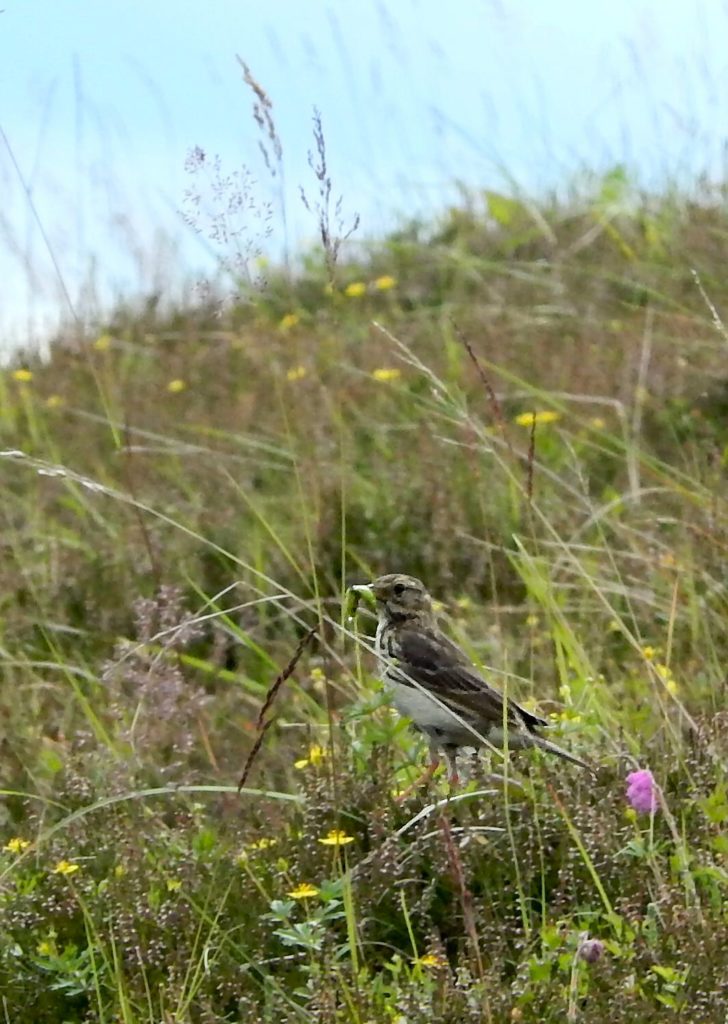

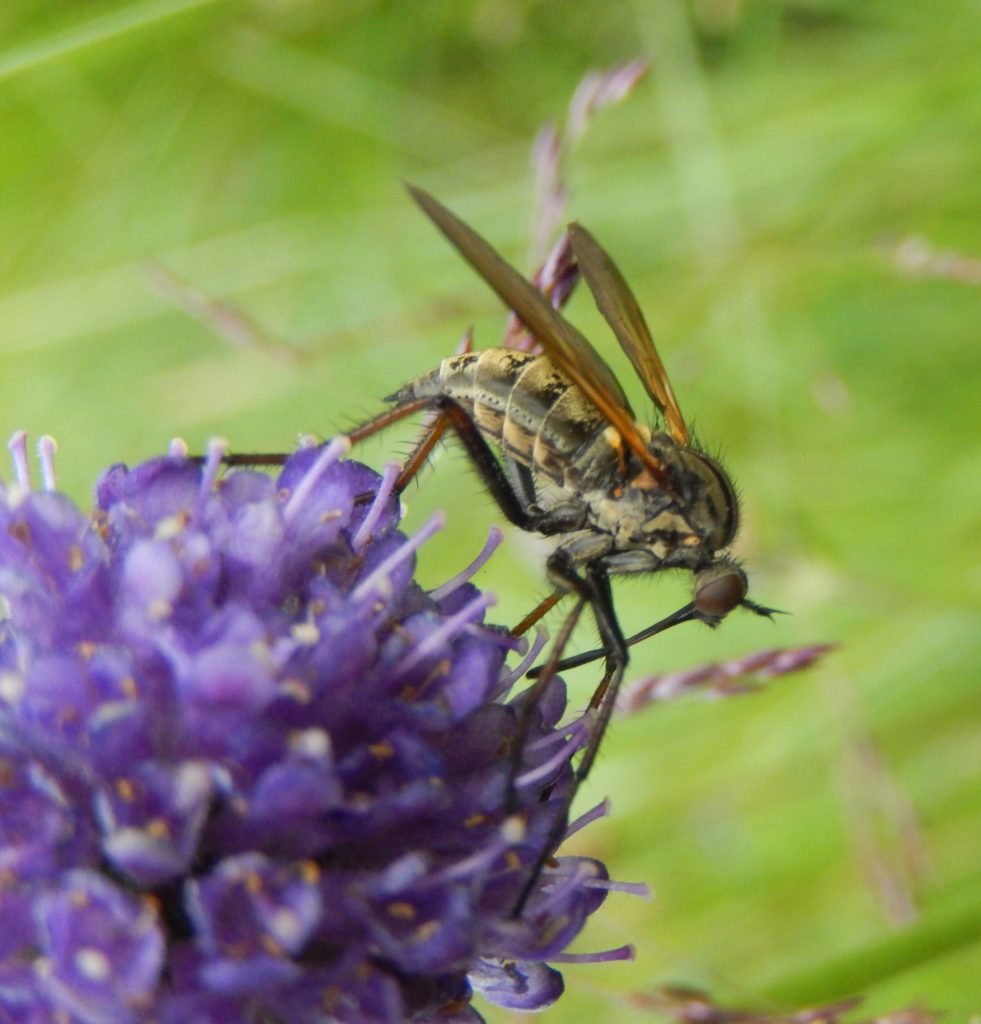
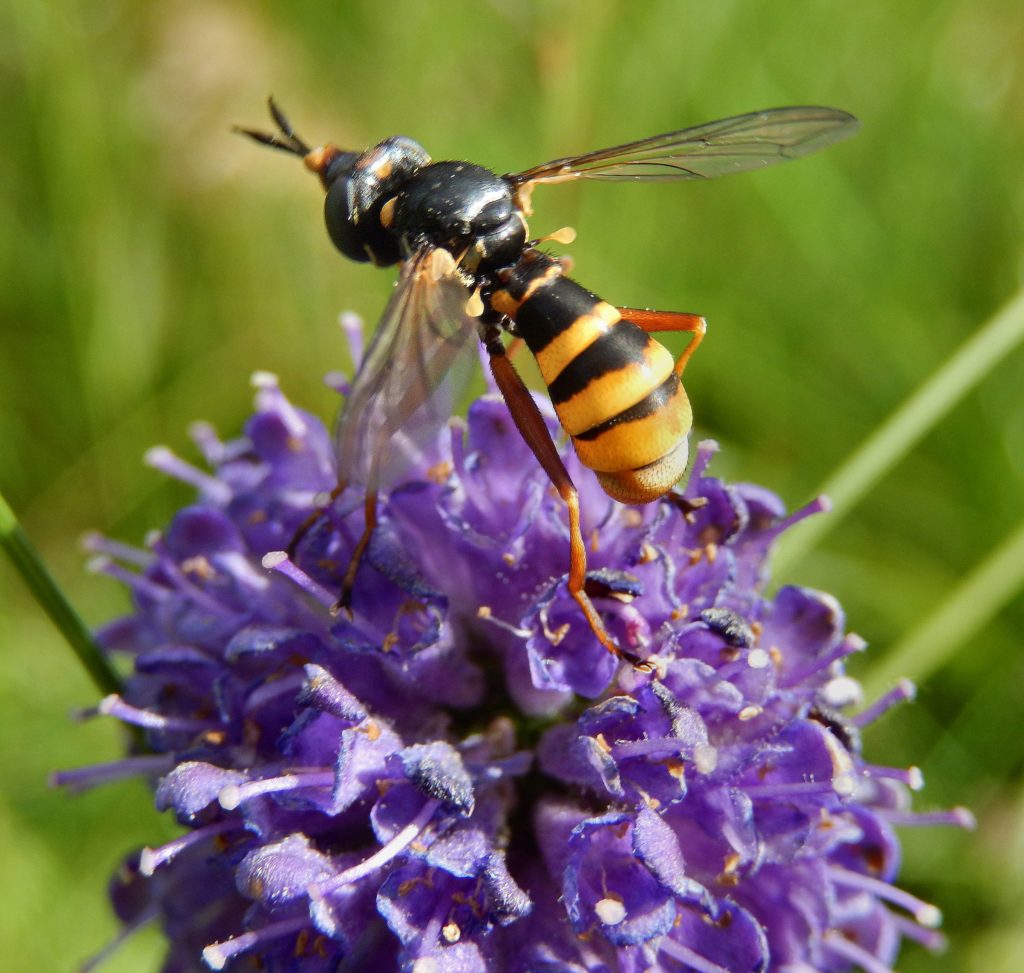
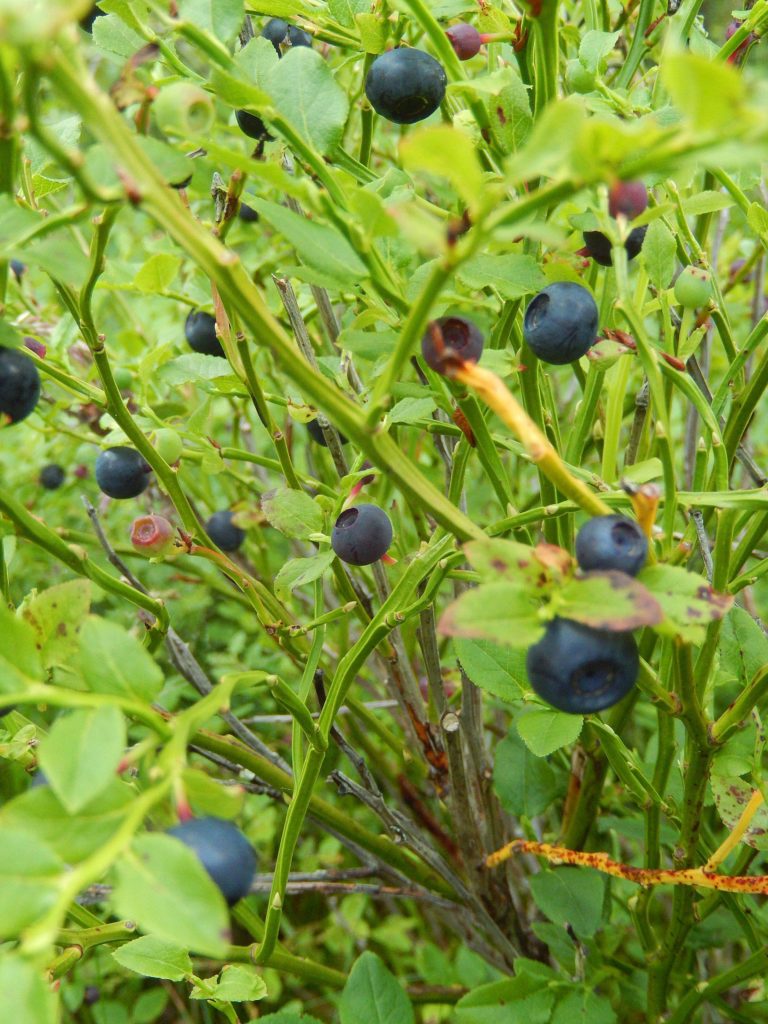
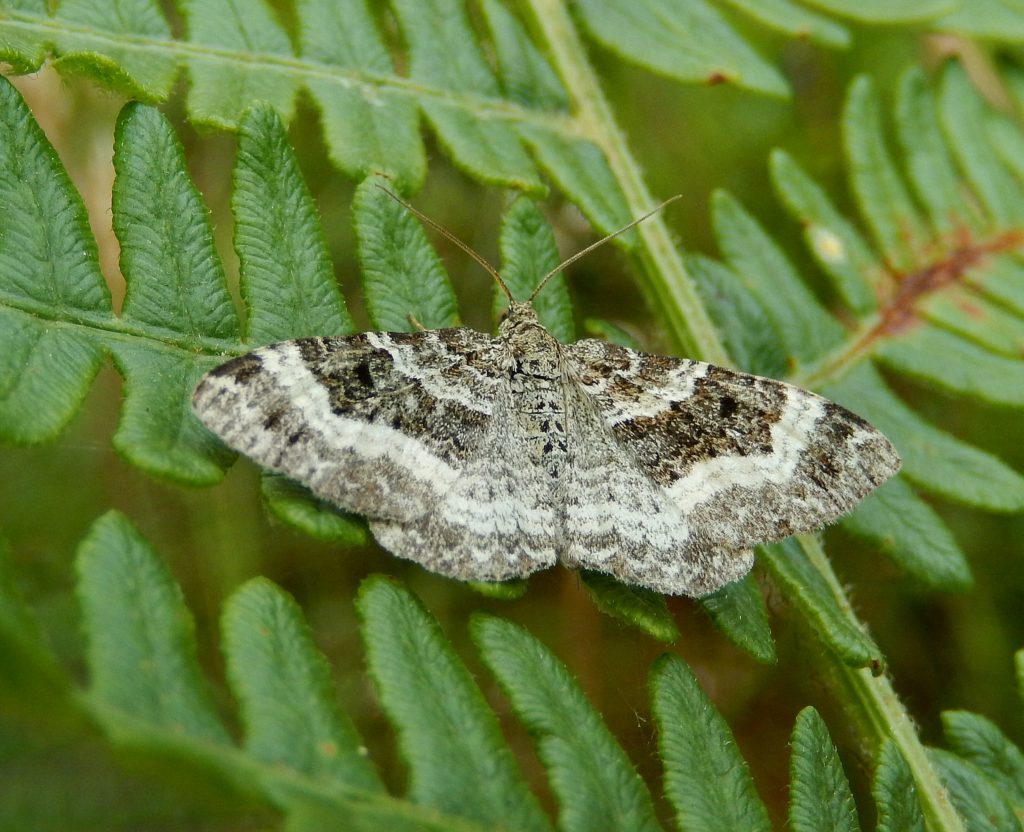
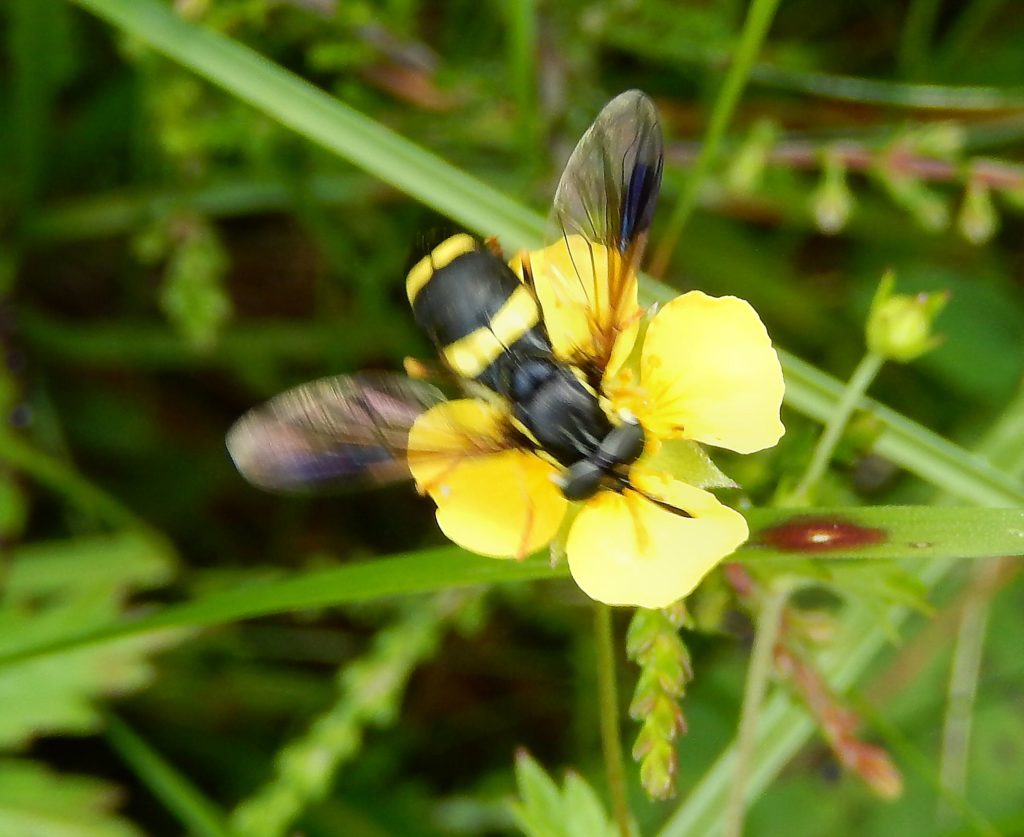
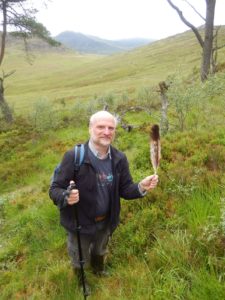
We walked up the hill through the birch woods, and across the heathery moor. On the drier, lower slopes, the heather was dotted with Eyebright, purple orchids and wild Thyme. Up above, on the flatter, wetter parts, bright yellow Bog Asphodel and the fluffy white tufts of Bog Cotton enlivened the landscape. We made not for the tops but for an ancient wood of thick pines, now widely spaced with thick soft moss and heather below them. The old Eagle’s nest is no more, the tip of the trunk that had supported it now snapped off in a storm, but Roy had seen an Eagle once or twice this year, still frequenting the area. We looked up at the trunks, two or three of them now forked at the top where side branches had taken over from a lost main shoot. At our feet was an Eagle’s quill, a flight primary feather, as long as my arm from elbow to knuckles, dark-tipped, mottled brown and white. I held it up for a photograph, put the camera away and shouldered my bag. Roy cried out and pointed: a Golden Eagle was lumbering into the air from a rock not 20 yards from us. It flapped away, turned and disappeared around the hill. Elated, I carried the feather home, not caring if I skidded on a wet slope. Down near the monument, the Bell Heather glowed in varied tones of purple: it gave off a delicate honey scent despite the lack of sunshine, and the bumble bees made the most of the bounty.
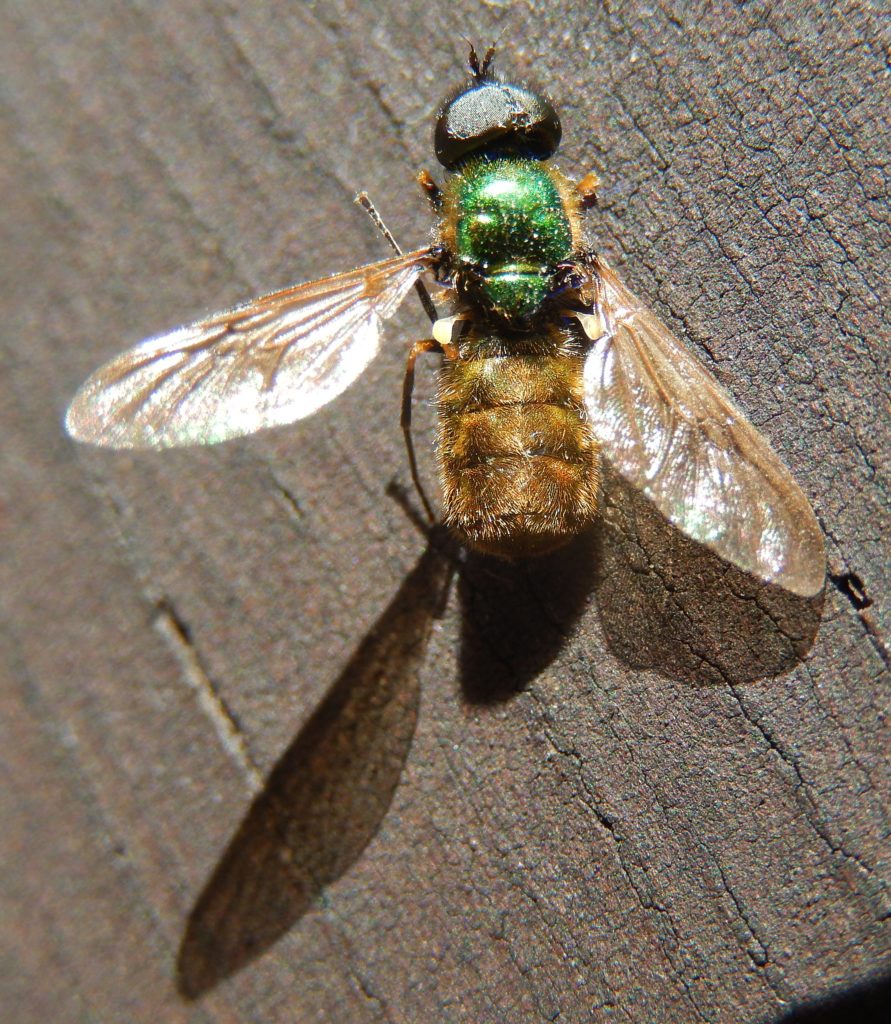
This little fly, seemed quite unassuming until I held it in the sunlight, and it sparkled iridescent, its thorax metallic green, its hairy abdomen gold. It is a male soldier fly (Stratiomyidae), a Dipteran as you can see from the club-like halteres in place of the hind wings. Its name is Chloromyia formosa, “the beautiful green fly”.
The book says the name soldier fly comes probably from the bright colours, like 18th century uniforms; the flies are not aggressive, but “often sluggish”.
The day looked unpromising for a nature walk, let alone a butterfly transect, but it was time to do one, so after a cursory tour to clip the worst of the brambles from the paths, we set off with clipboard and cameras to see what we could find.
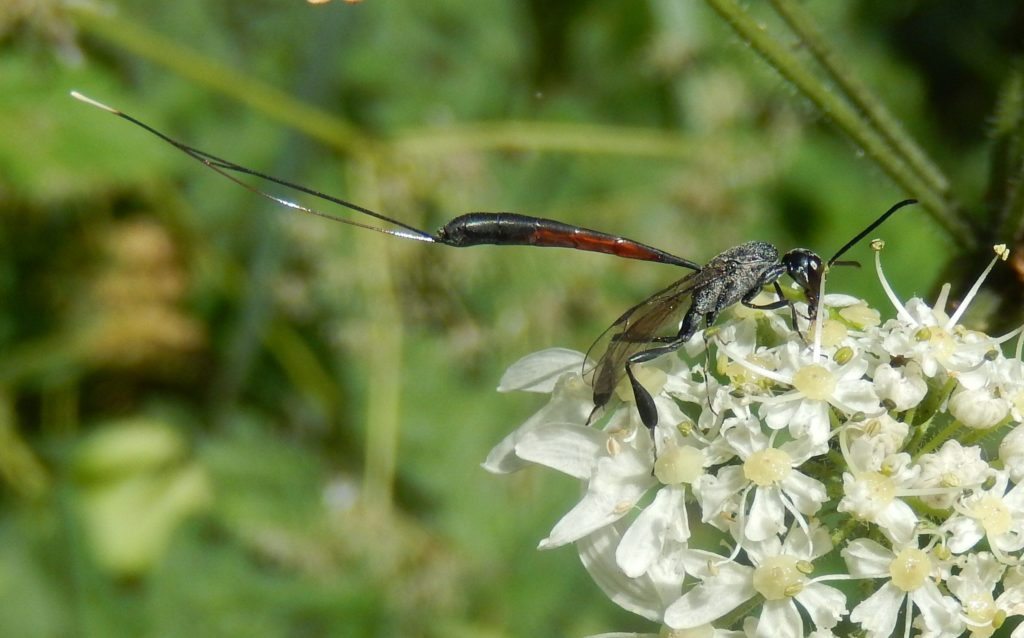
The hogweed, still in flower despite weeks of rainy weather that has caused many stalks to topple, was alive with flower beetles, bees large and small, and this magnificent Ichneumon wasp with its incredible ovipositor.
At first we saw only white butterflies, but a Comma was sunning itself, and a Speckled Wood had somehow survived the wet weather.
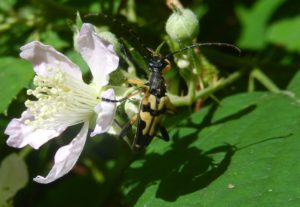
We saw two Strangalia maculata longhorn beetles taking nectar. They are Batesian mimics of wasps, looking in all truth only very slightly waspish, but perhaps young birds are put off. Or perhaps they do in fact taste foul.
We were just discussing the Sparrowhawks as we approached their nest tree when a commotion broke out along a branch, and a Sparrowhawk flew rapidly with its claws forward: a Squirrel raced away from the nest, hotly pursued by the angry bird; they leaped to the neighbouring tree and scurried up the matching branch out of sight. The Sparrowhawk broke into a loud excited chittering trill. We were all excited, laughing at the speed, the impossibility of reaching for a camera.
A Holly Blue flew over the pond, above several pairs of mating Azure Damselflies and a Yellow Iris now chewed right down to a semi-leafless state by the Iris Sawfly larvae.
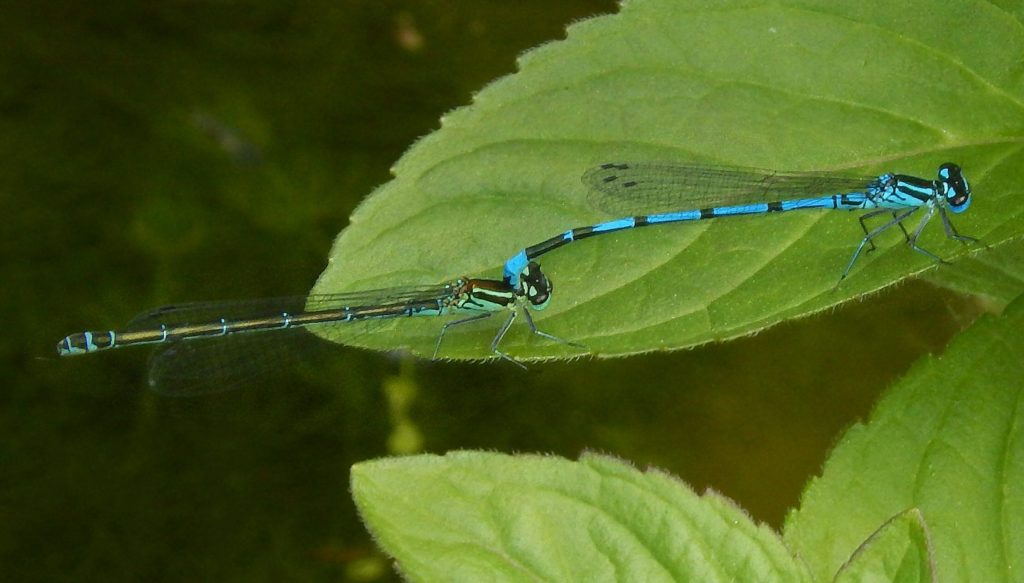
Down at the Anthill Meadow, a single Small Skipper perched on an ear of Yorkshire Fog.
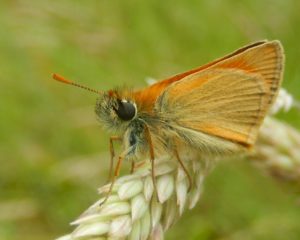
On the next ear was a male Bluetail Damselfly: they have emerged from the pond in the past week.
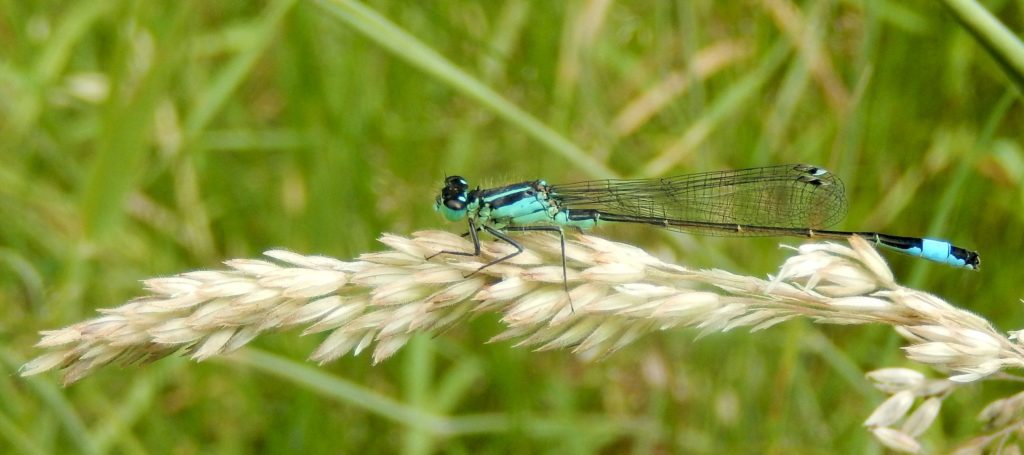
The wooden rail was sticky with snail pulp: a Song Thrush had hammered three snails open on the exposed woodwork, leaving shells and sticky patches behind.

Two days ago I saw a Cinnabar moth in the Small Meadow. There is plenty of Ragwort coming up, so with any luck there will be plenty of caterpillars soon.
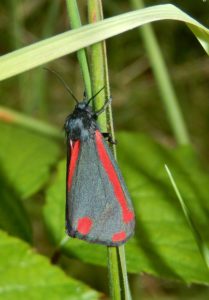
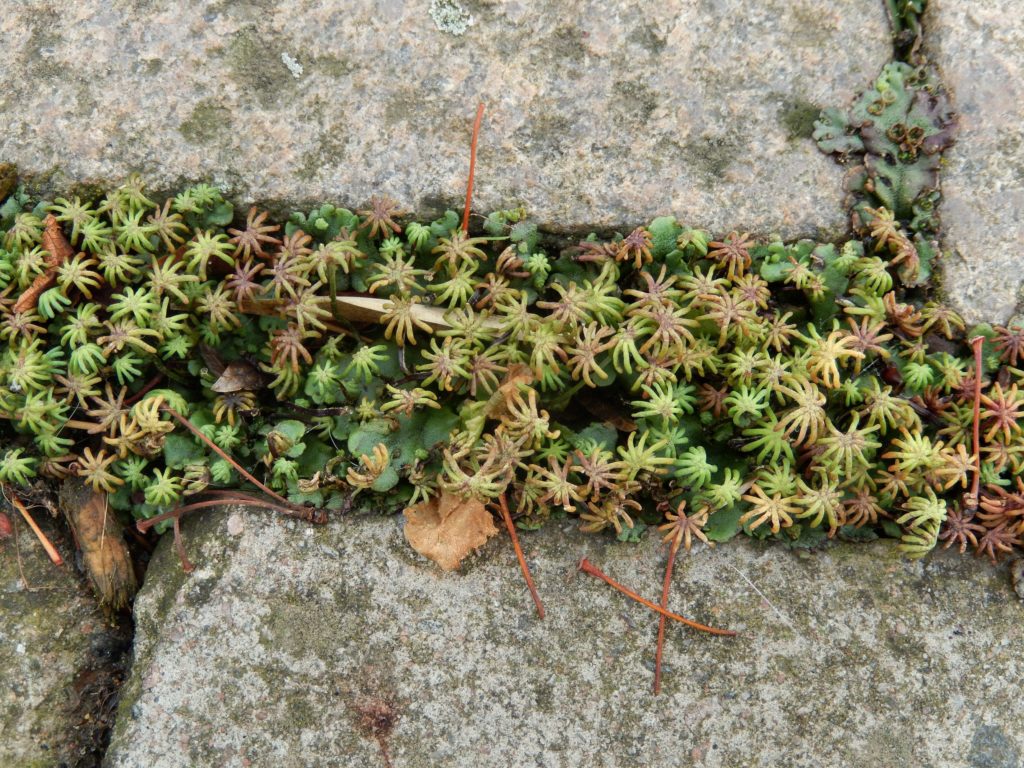
Well, it’s been pouring. The English Summer app is running, sort of, only the running is as in “running water”. The pavements in my street are wet enough to support flourishing colonies of the greenhouse liverwort Marchantia polymorpha. It is named polymorpha as it has many (poly-) forms (morph-). Two of these are rather splendidly visible in the photo.
Firstly, the female plants have decorative little umbrellas with star-shaped tops, which are gametophores which carry the female gametes, the ova.The flat green thallus is lobed like a liver, which by the mediaeval doctrine of signatures was supposed to be God’s way of indicating to the herbalist that this was a useful medicine for the liver … no worse than the modern crackpot ideas that Ben Goldacre ridicules in Bad Science, I guess.
Secondly, sticking up from the top of the thallus (try the top right of the photo) are little circular cups containing gemmae, small discus-shaped blobs of tissue. When a raindrop (yeah) splashes into the gemma cup, the gemmae ricochet out and land a little distance away, ready to grow, asexually, into new liverworts.They do this so well that stream banks are often carpeted with the little plants; and so are greenhouse pots.
Male plants (not shown here) have circular gametophores instead of the female star-shaped ones. Quite a lot of fun and curiosity from a small corner of pavement, really. In a sufficiently wet year, of course.
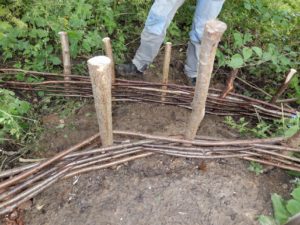
Well, you probably don’t need me to tell you that this summer – yes that was Midsummer’s day we just had – has been a teeny bit wet.
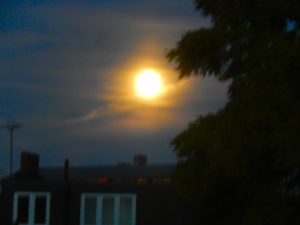
We’ve had the car park flooded repeatedly in front of the hut, and two storm channels have eroded tons of soil down the bank towards the railway.

Joking aside, we picked up some stout hazel poles and bundles of long slender binders, and sat at the top of the ramp with billhooks to sharpen the poles and cut them to length as withy-posts. We then hammered them into the very squishy mud of the main erosion channel, and did our best to weave the binders around them. They were a little dry and we heard a few ominous cracks, but in the main they wove in and out pretty well. We made two little fences with five posts each, leaving space for water to trickle below the basketwork, and indeed through it.
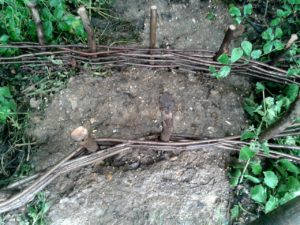
Last night there was yet another thunderous downpour, so this morning I went to have a look at whether our handiwork had helped. There was some scouring under the centre span of the front fence – overall, it looks as if the fences did a good job, but perhaps we need one more fence just at the front of the channel.
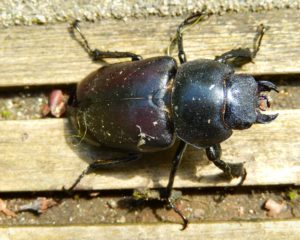
But happily, the bugs don’t seem to mind. I rescued this female Stag Beetle from a mat of weed in the pond: she seemed fine, holding on to my finger. She’s at least the third adult we’ve seen in recent weeks, so presumably many more have in fact hatched, a success for our loggeries and management approach.
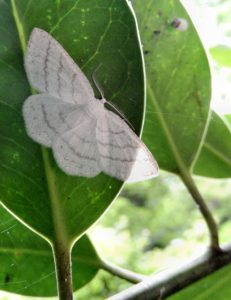
I’ve several times seen a biggish white moth rushing away to hide under bramble leaves. Today I managed to photograph one, which obligingly “hid” under a rhododendron leaf (yeah, we have some) and it’s the Common White Wave, Cabera pusaria. It likes Birch and Alder, so it must be living on our Birch trees here.

Mike instantly identified this handsome orange hoverfly as Sphaerophora scripta. It’s one of some 20 species he’s expertly noted in the reserve. A Volucella pellucens, the very large black and white species (with a pellucid whitish band on its abdomen, you really can see light through it) hovered unphotographably overhead.
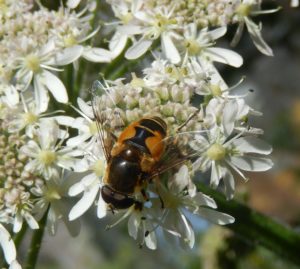
The Hogweed with its large white flowerheads is proving extremely attractive to different species of bees (honeybees, Andrena, Megachile leafcutters), bumblebees (tree, garden, buff-tailed, and others) and hoverflies, including this smart orange and black one. Mike says it’s a male Eristalis horticola, a new species for the reserve. Yay!
These are some moth (geometrid?) eggs on the underside of an English Oak leaf.
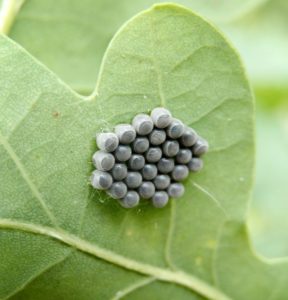
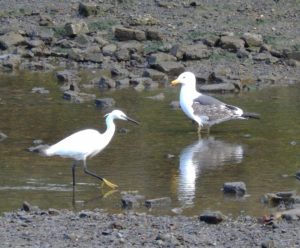
Today I set out between the showers to survey the Swifts, if any, near Chiswick Mall. Equipped with a map and instructions, I chose six viewpoints at road junctions, and cycled between them, keeping a sharp eye out. By St Nicholas’ Church, three House Martins wheeled overhead, but no Swifts.
Up the Mall, near Chiswick Lane South, one Swift hawked high over the river, as did a pair of House Martins, quite an encouraging sight:. There were six nests in good condition on Field House, and within a minute I saw two Martins fly in and out of a nest.
Down the beach in front of Chiswick Eyot, a Little Egret trotted up and down in the water, showing off its elegant figure and yellow feet, and stabbing rapidly at invisibly tiny fish.
Nil to report at Eyot Gardens, despite the handsome tall terrace of red brick houses that once held many House Martin nests. No malice had been shown the colony: probably the loss is due to the dangers of the Sahel (and the guns of the Mediterranean).
Round the corner in British Grove, I was surprised and delighted to see two Swifts overhead – quite high, twice the height of the buildings, so no indication of a nearby nest, but still nice to see them.
If you know of any Swift nests in the area or nearby, I’d love to hear from you!